|
 |
 Автор: Williams Автор: Williams
 Дата: 12 декабря 2017 Дата: 12 декабря 2017
 Просмотров: 2 143 Просмотров: 2 143 |
| |
Intergraph CAESAR II 2018 v10.00.00.7700 build 170726
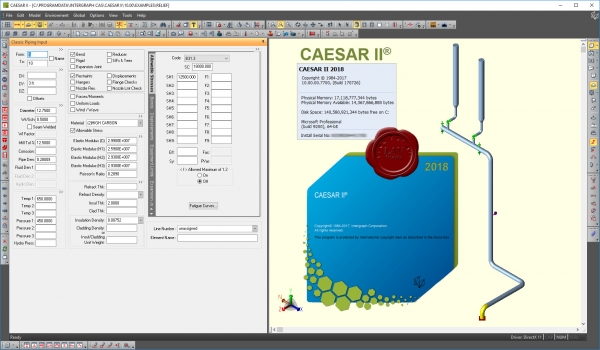
Intergraph CAESAR II определяет напряженно-деформированное состояние трубопроводов и поведение конструкций по международным нормам и стандартам. Являясь эталоном для сравнения, программа стала мировым стандартом прочностного анализа трубопроводных систем.
Ensuring your plant’s piping systems adhere to international codes and standards plays an integral role in keeping your plant operational. Intergraph CAESAR II software makes it easy to input and display all the data needed to accurately define a piping system analysis model. It evaluates the structural responses and stresses of your piping systems to international codes and standards, and enables you to access and modify, if necessary, input element by element or globally. As pipe flexibility and stress analysis software, CAESAR II makes quick work of developing analysis models while clearly indicating areas of concern via color-coded stress models and animated displacements for any stress load case. Included are tools and wizards to help you create expansion loops or view plant models, removing the guesswork from producing accurate analysis and recommending practical design changes. |
| |
 Читать статью дальше (комментариев - 17)
Читать статью дальше (комментариев - 17)
| |
|
 |
 Автор: Williams Автор: Williams
 Дата: 11 декабря 2017 Дата: 11 декабря 2017
 Просмотров: 1 358 Просмотров: 1 358 |
| |
Institute of Transportation Engineers - Trip Generation Handbook 3rd Edition
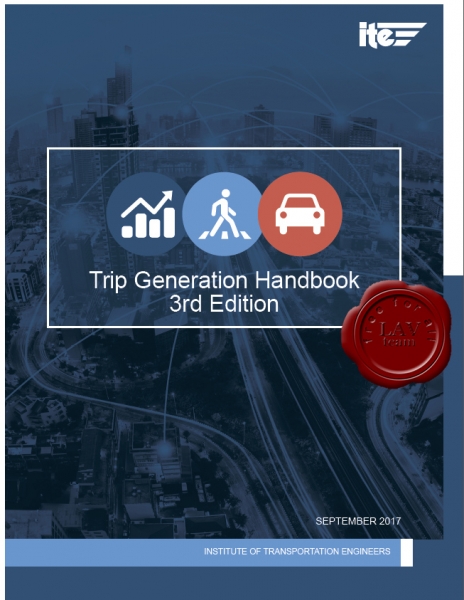
The Trip Generation Manual is a publication of the Institute of Transportation Engineers (ITE).
Volume 1 of the publication, the Desk Reference, provides a detailed description of new urban and person-based trip data, summarizes key instructional information, presents sample plots, and identifies significant changes from the previous edition. It also contains definitions of the independent variables and terms used in this manual.
Volume 2 of the Trip Generation Manual includes a complete set of searchable electronic PDF files including land use descriptions and data plots for all combinations of available land uses, time periods, independent variables, settings, and trip types (vehicle or person). All person trip generation plots are displayed with shading to clearly distinguish them from the vehicle trip generation plots. Volume 2 has been divided into 10 parts in accordance with the following land use categories: Port and Terminal, Industrial, Residential, Lodging, Recreational, Institutional, Medical, Office, Retail, and Services. Within each of the 10 parts, the land use descriptions and data plots are ordered in accordance with the following criteria: land use code, trip mode (vehicle or person), setting/location, independent variable, and time period. Data contained in Volume 2 are prepared for informational purposes only and do not include ITE recommendations on the best course of action or the preferred application of the data. The information in Volume 2 is based on trip generation studies submitted voluntarily to ITE by public agencies, developers, consulting firms, student chapters, and associations. Users are encouraged to review and become familiar with the Desk Reference prior to using the data contained in Volume 2.
The Trip Generation Handbook, 3rd Edition is also included with the Trip Generation Manual. The Trip Generation Handbook, 3rd Edition (Publication Number RP-028D) replaces the Trip Generation Handbook 3rd Edition, An ITE Proposed Recommended Practice (Publication Number RP-028C, August 2014). This report has the following two primary purposes: to provide instruction and guidance in the proper use of data presented in the Trip Generation Manual and to provide information on supplemental issues of importance in estimating trip generation for development sites. The updated Handbook provides new guidance on proper techniques for estimating person and vehicular trip generation rates, updates guidance for the evaluation of mixed use developments and the establishment of local trip generation rates, and expands pass-by trip and truck trip generation data. |
| |
 Читать статью дальше (комментариев - 10)
Читать статью дальше (комментариев - 10)
| |
|
 |
 Автор: Williams Автор: Williams
 Дата: 10 декабря 2017 Дата: 10 декабря 2017
 Просмотров: 1 476 Просмотров: 1 476 |
| |
KAPPA Emeraude v2.42.10 portable
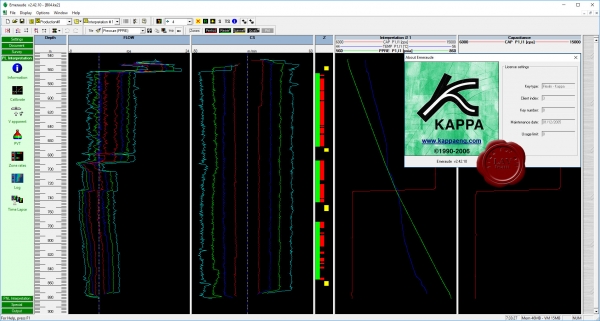
КАППА является ведущим поставщиком программного обеспечения для анализа динамических данных, а также услуг в сфере обучения и консалтинга. Данные для анализа могут быть любого масштаба: применимые в ГДИС (высокого разрешения и частоты записи), в анализе добычи (низкого разрешения и частоты записи), для адаптации модели месторождения, описания скважины по профилю при помощи как интерпретации ПГИ, так и данных пластоиспытателя.
Ecrin (что в переводе с французского означает «ларчик для драгоценностей») представляет собой программную среду, в которой работают все аналитические модули КАРРА. С помощью всего одной выполняемой программы можно обеспечить полную взаимосвязь между модулями и позволить им совместно использовать такие общие технические объекты, как PVT, модели и данные. Если, к примеру, в модуле Saphir существует объект PVT, то через браузер его можно «перетащить» в модуль Topaze. Таким образом, данные вводятся всего один раз. Можно даже осуществлять такие операции, как перенос целого документа Saphir в новый документ Topaze, получая тем самым одним кликом информацию, давления, дебиты и модель.
Mодули Ecrin:
- Diamant — обработка данных стационарных глубинных манометров;
- Saphir — анализ данных гидродинамических исследований скважин;
- Topaze — анализ и прогноз добычи;
- Rubis — программа трехмерного трехфазного моделирования нефтяного пласта;
- Citrine — анализ кустового расположения скважин;
- Emeraude — программа анализа и интерпретации результатов геофизических исследований скважин.
Промысловый каротаж, или PLs, проводится в добывающих или нагнетательных скважинах с целью оценки работы скважины и/или продуктивности пласта. Другими словами, в случае добывающей скважины нам нужно определить состав и количество притока из каждого пласта при одновременной разработке. Связка приборов для исследования может быть достаточна простой. Стандартные исследования проводятся в вертикальных и наклонных скважинах, где замеряется общий расход (принимаем, что прибор центрирован), используя показания откалиброванного расходомера. Далее определяется состав притока по замерам других приборов (обычно это замеры плотности, давления и температуры) и корреляций потока Emeraude. Стремительное распространение горизонтальных скважин в последнее время привело к разработке соответствующей комплексной аппаратуры ПГИ. Основная сложность заключается в слоистой структуре потока, которая учитывается за счет нескольких измерительных датчиков, распределенных вокруг и поперек площади сечения. Emeraude не отстает от этих разработок и предлагает выбор схемы расчетов и функционал визуализации для интерпретации данных многозондовых приборов.
Production logs, or PLs, are run on production or injection wells, with the goal of evaluating the well itself and/or the reservoir performance. Put simply, for producing wells, we need to determine what fluid is coming from which zone, and how much. The PL string may be a relatively simple, conventional configuration run in vertical or deviated wells that, based on the assumption the tool is centralised in the flow, measures the bulk flowrate using a calibrated spinner and then discriminates the fluid type(s) using a suite of tools usually including density, pressure and temperature applied to flow correlations in Emeraude. With the proliferation of horizontal wells in recent years the PL strings have, by necessity, become increasingly complex. The challenge is to handle segregated flow by various distributed measurements around and across the section of the pipe. Emeraude has kept pace with these developments and offers a choice of calculation schemes and visualisation options to cope with these multiple array tools from any vendor. |
| |
 Читать статью дальше (комментариев - 12)
Читать статью дальше (комментариев - 12)
| |
|
 |
 Автор: Williams Автор: Williams
 Дата: 9 декабря 2017 Дата: 9 декабря 2017
 Просмотров: 1 041 Просмотров: 1 041 |
| |
Institute of Transportation Engineers - Trip Generation Manual 10th Edition - Volume 1: Desk Reference
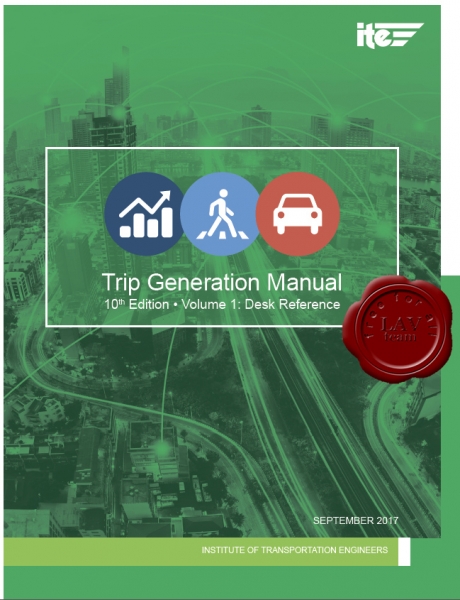
The Trip Generation Manual is a publication of the Institute of Transportation Engineers (ITE).
Volume 1 of the publication, the Desk Reference, provides a detailed description of new urban and person-based trip data, summarizes key instructional information, presents sample plots, and identifies significant changes from the previous edition. It also contains definitions of the independent variables and terms used in this manual.
Volume 2 of the Trip Generation Manual includes a complete set of searchable electronic PDF files including land use descriptions and data plots for all combinations of available land uses, time periods, independent variables, settings, and trip types (vehicle or person). All person trip generation plots are displayed with shading to clearly distinguish them from the vehicle trip generation plots. Volume 2 has been divided into 10 parts in accordance with the following land use categories: Port and Terminal, Industrial, Residential, Lodging, Recreational, Institutional, Medical, Office, Retail, and Services. Within each of the 10 parts, the land use descriptions and data plots are ordered in accordance with the following criteria: land use code, trip mode (vehicle or person), setting/location, independent variable, and time period. Data contained in Volume 2 are prepared for informational purposes only and do not include ITE recommendations on the best course of action or the preferred application of the data. The information in Volume 2 is based on trip generation studies submitted voluntarily to ITE by public agencies, developers, consulting firms, student chapters, and associations. Users are encouraged to review and become familiar with the Desk Reference prior to using the data contained in Volume 2.
The Trip Generation Handbook, 3rd Edition is also included with the Trip Generation Manual. The Trip Generation Handbook, 3rd Edition (Publication Number RP-028D) replaces the Trip Generation Handbook 3rd Edition, An ITE Proposed Recommended Practice (Publication Number RP-028C, August 2014). This report has the following two primary purposes: to provide instruction and guidance in the proper use of data presented in the Trip Generation Manual and to provide information on supplemental issues of importance in estimating trip generation for development sites. The updated Handbook provides new guidance on proper techniques for estimating person and vehicular trip generation rates, updates guidance for the evaluation of mixed use developments and the establishment of local trip generation rates, and expands pass-by trip and truck trip generation data. |
| |
 Читать статью дальше (комментариев - 7)
Читать статью дальше (комментариев - 7)
| |
|
 |
 Автор: Williams Автор: Williams
 Дата: 8 декабря 2017 Дата: 8 декабря 2017
 Просмотров: 1 951 Просмотров: 1 951 |
| |
KAPPA Ercin v4.02.04
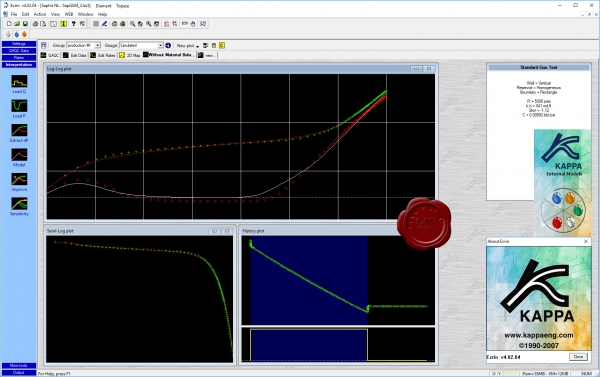
КАППА является ведущим поставщиком программного обеспечения для анализа динамических данных, а также услуг в сфере обучения и консалтинга. Данные для анализа могут быть любого масштаба: применимые в ГДИС (высокого разрешения и частоты записи), в анализе добычи (низкого разрешения и частоты записи), для адаптации модели месторождения, описания скважины по профилю при помощи как интерпретации ПГИ, так и данных пластоиспытателя.
Ecrin (что в переводе с французского означает «ларчик для драгоценностей») представляет собой программную среду, в которой работают все аналитические модули КАРРА. С помощью всего одной выполняемой программы можно обеспечить полную взаимосвязь между модулями и позволить им совместно использовать такие общие технические объекты, как PVT, модели и данные. Если, к примеру, в модуле Saphir существует объект PVT, то через браузер его можно «перетащить» в модуль Topaze. Таким образом, данные вводятся всего один раз. Можно даже осуществлять такие операции, как перенос целого документа Saphir в новый документ Topaze, получая тем самым одним кликом информацию, давления, дебиты и модель.
Mодули Ecrin:
- Diamant — обработка данных стационарных глубинных манометров;
- Saphir — анализ данных гидродинамических исследований скважин;
- Topaze — анализ и прогноз добычи;
- Rubis — программа трехмерного трехфазного моделирования нефтяного пласта;
- Citrine — анализ кустового расположения скважин;
- Emeraude — программа анализа и интерпретации результатов геофизических исследований скважин.
KAPPA is the leading provider of Dynamic Data Analysis software, training and consulting services. Data are analysed on whatever scale is available, from high frequency, high resolution transient data through low frequency, low resolution rate data in production analysis and on into full field history matching and vertical description using production log and formation test analysis. Saphir is the industry standard PTA software, used by nearly all major IOC’s, NOC’s, Independents and Service Companies. Its simple user interface and workflow allows for fast training and self-learning for occasional users. For the advanced user, it offers a unique combination of analysis tools, analytical models and numerical models which can connect to other dynamic data application such as Topaze NL for Rate Transient Analysis and Rubis for fullfield history matching. Topaze is fully compatible with Saphir NL data and models. An extensive analytical model catalog and numerical capability provides reliable history matching and forecasting. The early 2000s was also the time of proliferation of Permanent Downhole Gauges (PDG) and the industry’s first experience of reservoir data overload. This rich source of data required smart filtering (wavelets) to drastically reduce the number of data points without losing information. These algorithms were integrated in a new product, Diamant, which was also transferring select parts of the resulting filtered data to Saphir and Topaze on a single click. |
| |
 Читать статью дальше (комментариев - 8)
Читать статью дальше (комментариев - 8)
| |
|
 |
 Автор: Williams Автор: Williams
 Дата: 7 декабря 2017 Дата: 7 декабря 2017
 Просмотров: 1 274 Просмотров: 1 274 |
| |
Institute of Transportation Engineers - Trip Generation Manual 10th Edition - Volume 2: Data
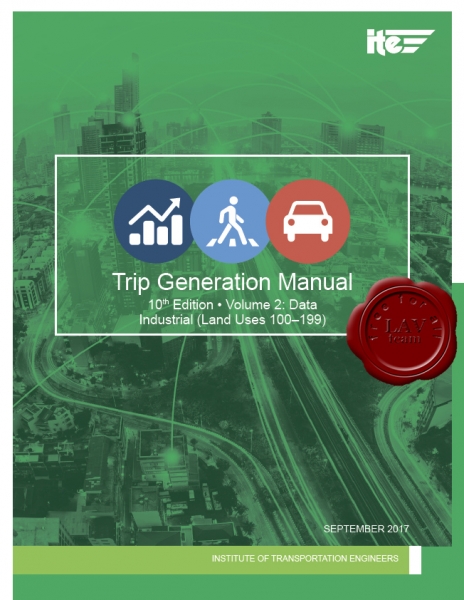
Volume 1 of the publication, the Desk Reference, provides a detailed description of new urban and person-based trip data, summarizes key instructional information, presents sample plots, and identifies significant changes from the previous edition. It also contains definitions of the independent variables and terms used in this manual.
Volume 2 of the Trip Generation Manual includes a complete set of searchable electronic PDF files including land use descriptions and data plots for all combinations of available land uses, time periods, independent variables, settings, and trip types (vehicle or person). All person trip generation plots are displayed with shading to clearly distinguish them from the vehicle trip generation plots. Volume 2 has been divided into 10 parts in accordance with the following land use categories: Port and Terminal, Industrial, Residential, Lodging, Recreational, Institutional, Medical, Office, Retail, and Services. Within each of the 10 parts, the land use descriptions and data plots are ordered in accordance with the following criteria: land use code, trip mode (vehicle or person), setting/location, independent variable, and time period. Data contained in Volume 2 are prepared for informational purposes only and do not include ITE recommendations on the best course of action or the preferred application of the data. The information in Volume 2 is based on trip generation studies submitted voluntarily to ITE by public agencies, developers, consulting firms, student chapters, and associations. Users are encouraged to review and become familiar with the Desk Reference prior to using the data contained in Volume 2.
The Trip Generation Handbook, 3rd Edition is also included with the Trip Generation Manual. The Trip Generation Handbook, 3rd Edition (Publication Number RP-028D) replaces the Trip Generation Handbook 3rd Edition, An ITE Proposed Recommended Practice (Publication Number RP-028C, August 2014). This report has the following two primary purposes: to provide instruction and guidance in the proper use of data presented in the Trip Generation Manual and to provide information on supplemental issues of importance in estimating trip generation for development sites. The updated Handbook provides new guidance on proper techniques for estimating person and vehicular trip generation rates, updates guidance for the evaluation of mixed use developments and the establishment of local trip generation rates, and expands pass-by trip and truck trip generation data. |
| |
 Читать статью дальше (комментариев - 12)
Читать статью дальше (комментариев - 12)
| |
|
 |
 Автор: Williams Автор: Williams
 Дата: 3 декабря 2017 Дата: 3 декабря 2017
 Просмотров: 2 032 Просмотров: 2 032 |
| |
Dassault Systemes SIMULIA (ex. Next Limit) XFlow 2017 build 100.06
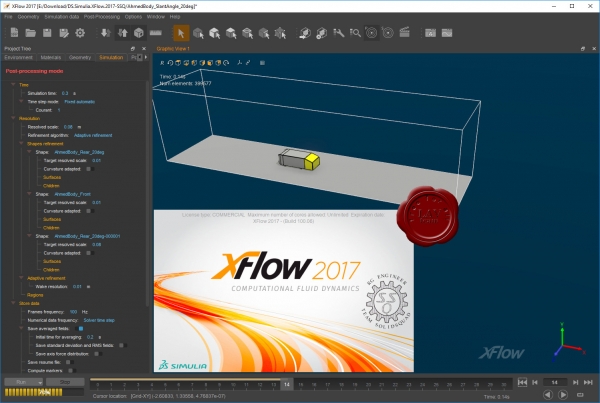
XFlow - мощная инновационная технология вычислительной гидрогазодинамики (Computational Fluid Dynamics - CFD), использующая запантентованный и основанный на методе частиц ("particle-based") лагранжев подход для решения традиционно сложных проблем гидрогазодинамики на всех этапах проектирования и доводки будущих изделий. XFlow предназначен для моделирования течения газов, жидкостей и решения задач тепломассообмена. При решении подобного класса задач XFlow позволяет одновременно учесть кинематику и динамику конструкции, физику многофазных течений, дозвуковые и сверхзвуковые явления, акустику и взаимодействие конструкции с жидкостью. Разработанный специально для инженеров и расчетчиков, обычно требующих наличия быстрого и точного решения при сложном поведении потока, XFlow позволяет осуществлять сложное численное моделирование в простой и понятной форме, избавляет пользователя от задания большого числа алгоритмических параметров и традиционно трудоёмкого процесса построения газодинамических сеток на сложной геометрии. CFD технология, заложенная в XFlow, демонстрирует возможность комплексного моделирования поведения потока с учетом реальной окружающей среды и возможность существенного снижения финансовых и временных затрат, тем самым предлагая реальную альтернативу проведению множества дорогостоящих экспериментов.
XFlow CFD is a leader in highly dynamic fluid flow simulation used in aerospace and defense, transportation and mobility, high-tech, energy and other industries. XFlow software solutions are used by simulation analysts for accurate and robust simulation of highly dynamic fluid flow in order to solve challenging CFD problems faster than traditional methods.
New features are available in XFlow 2017: Immersed Boundary Method; MPI Supersonic Engine; Multiphase Thermal Solvers; Conjugate Heat Transfer with Moving Parts; New Project Tree and Workflow; New Render Engine; Multi-Language GUI. |
| |
 Читать статью дальше (комментариев - 10)
Читать статью дальше (комментариев - 10)
| |
|
 |
| ПОИСК ПО САЙТУ |
 |
|
 |
|